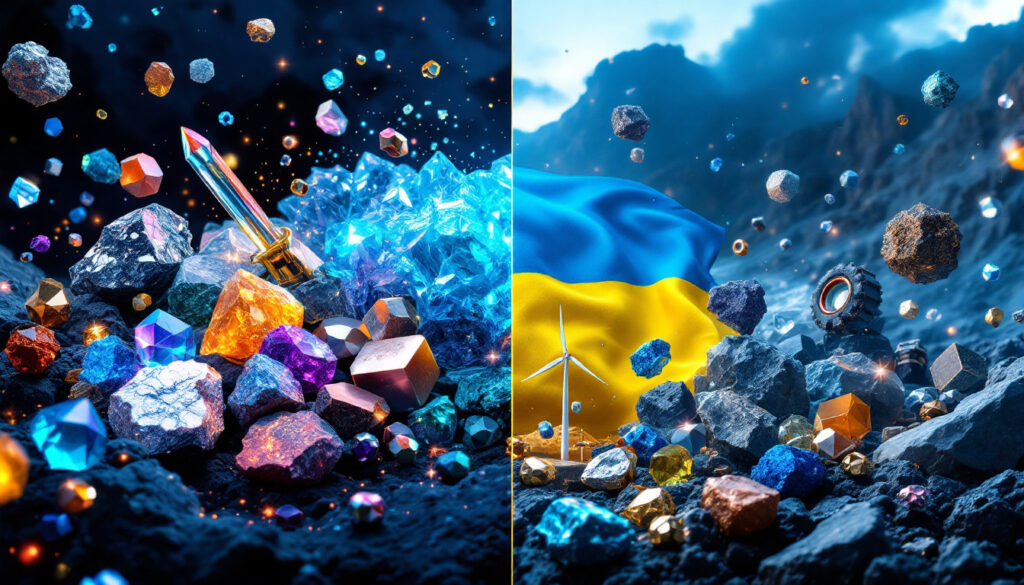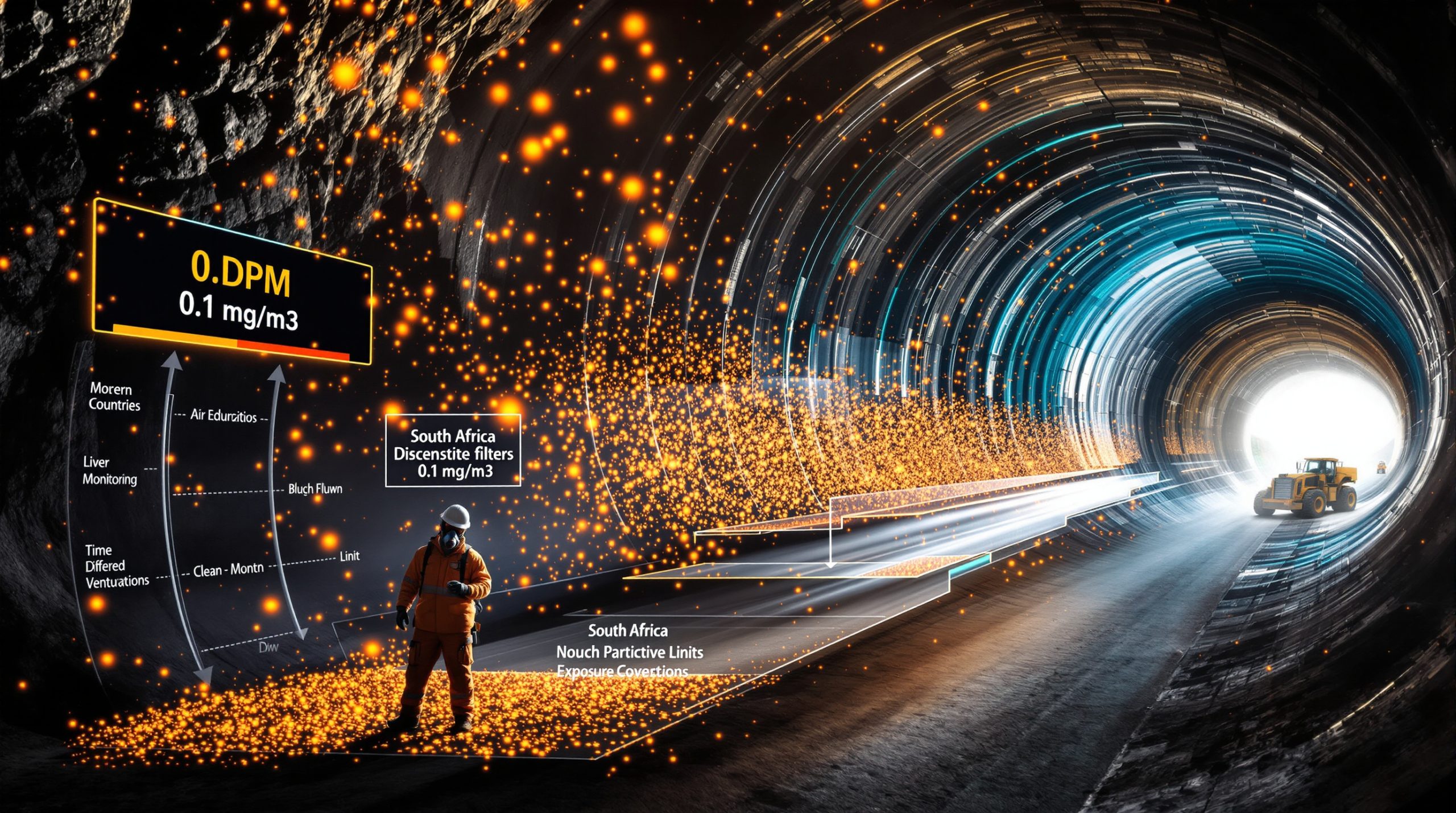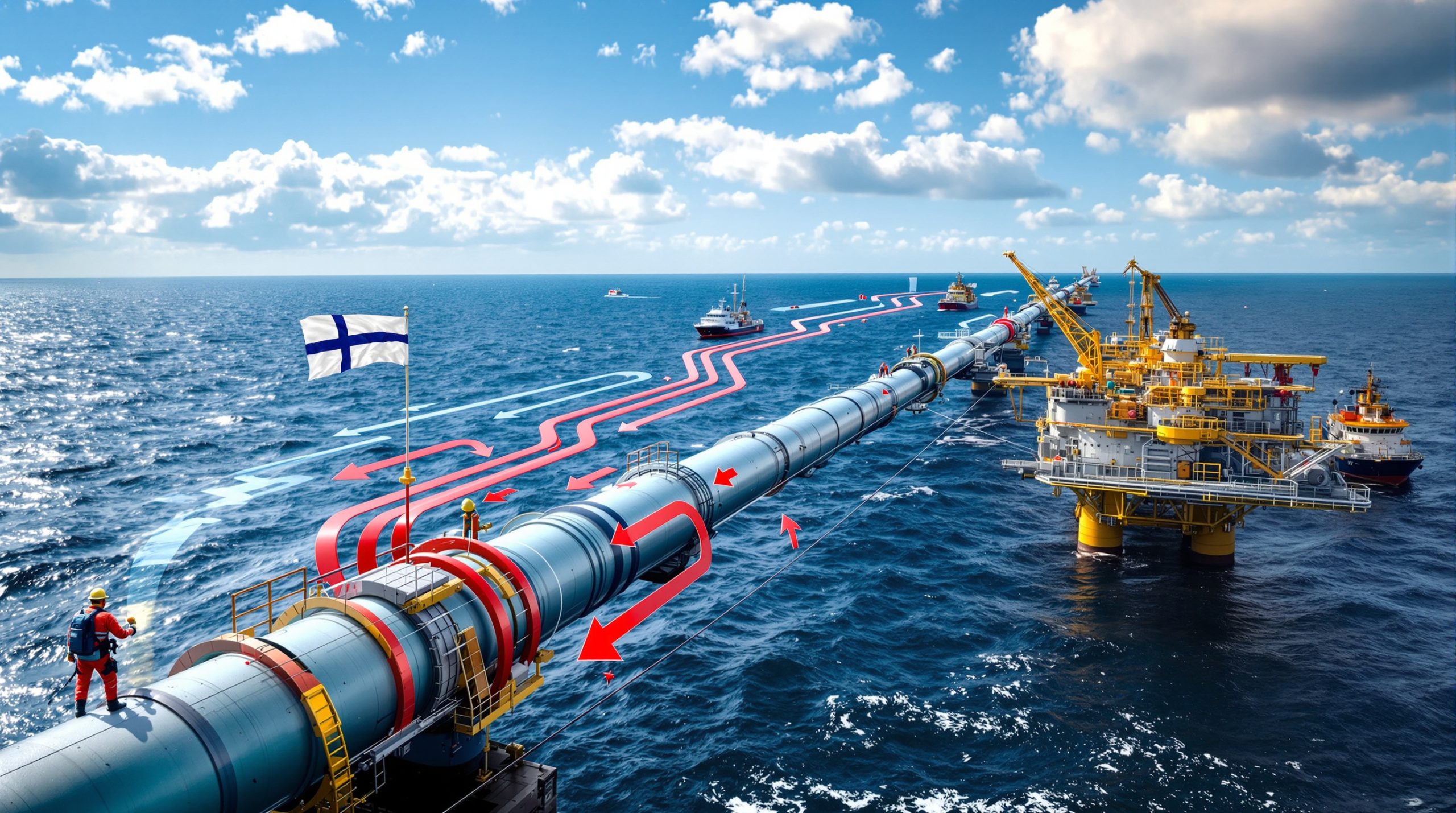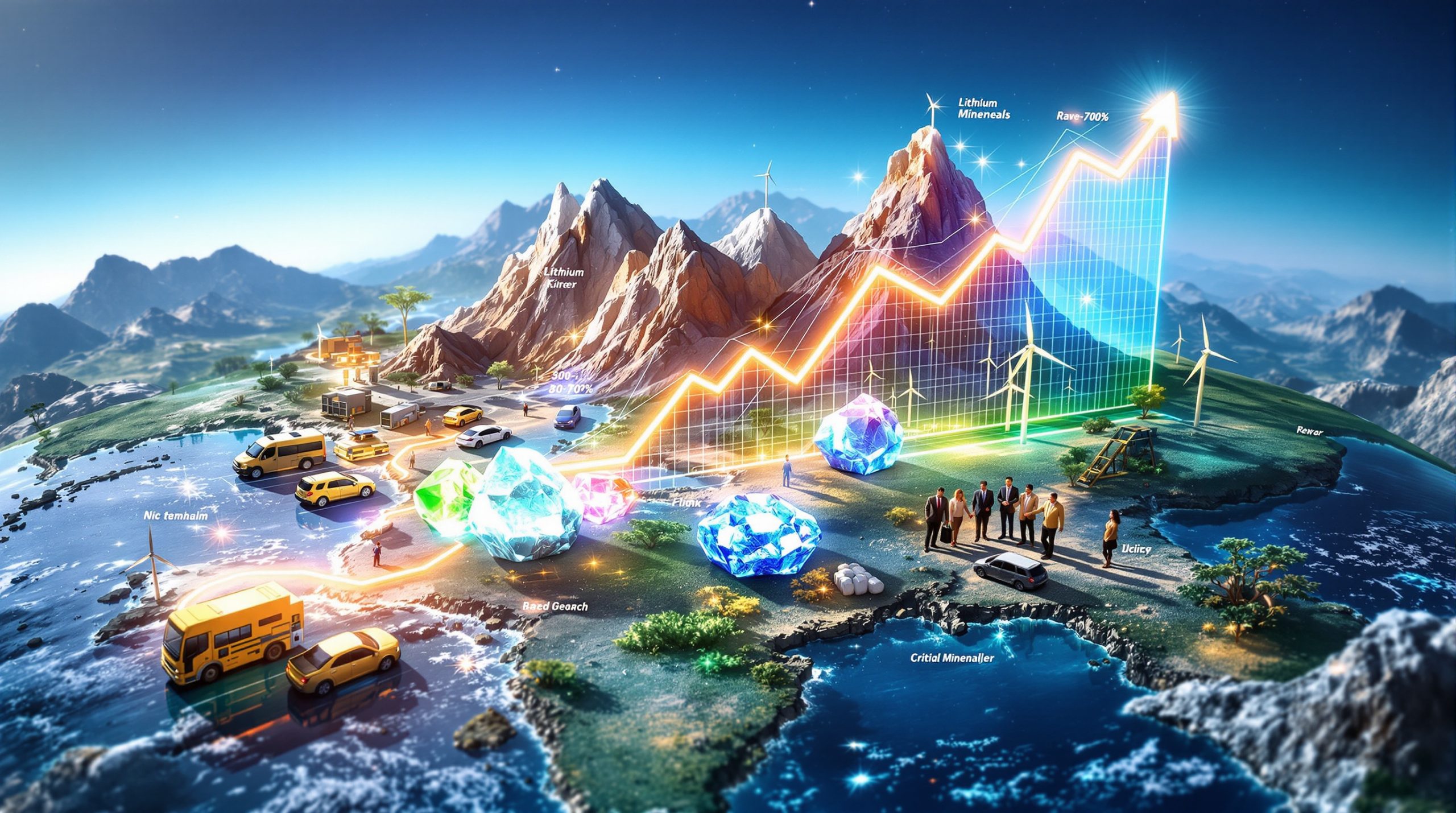What Are Ukraine's Critical Minerals and What Do We Know About the US-Ukraine Deal?
Ukraine's geological wealth includes 22 of the 34 minerals identified by the European Union as critical resources. These deposits position Ukraine as a potentially significant supplier in the global critical mineral shortages market, especially as nations seek to diversify supply chains away from dominant producers like China.
What Critical Minerals Does Ukraine Possess?
Ukraine's mineral wealth extends across numerous categories of critical resources, making it a potentially strategic partner for Western nations seeking to secure reliable supply chains for high-tech manufacturing and green energy transitions.
Rare Earth Elements in Ukraine
Ukraine possesses several valuable rare earth elements (REEs), though commercial extraction remains underdeveloped:
- Lanthanum and Cerium: Essential components in television screens, catalytic converters, and lighting technologies
- Neodymium: Critical for manufacturing permanent magnets used in wind turbine generators and electric vehicle motors
- Erbium and Yttrium: Used in applications ranging from nuclear power generation to laser technologies and fiber optics
- Scandium: Identified in EU-funded research as present in Ukrainian territory, valuable for aerospace alloys
The "Ukrainian Mars" area near Krivoy Rog contains multicolored rock formations indicative of rare earth-rich deposits, but lacks commercial mining operations due to underdeveloped extraction infrastructure.
Strategic Battery Minerals
Ukraine's battery mineral reserves position it as a potential cornerstone in Europe's transition to electric mobility:
- Lithium: Estimated reserves of 500,000 metric tons, representing one of Europe's largest confirmed deposits (though modest compared to Australia's 3.8 million tons)
- Graphite: Represents approximately 20% of global rare earth reserves, crucial for EV battery anodes and nuclear reactors
- Manganese: Identified by the World Economic Forum as a key potential supply source, essential for battery cathodes and steel production
"Ukraine's lithium reserves position it as a strategic player in Europe's battery supply chain," noted a recent assessment from the Ukrainian State Geological Service.
Other Critical Resources
Beyond rare earths and battery minerals, Ukraine holds substantial reserves of:
- Titanium: Significant deposits located primarily in northwestern and central regions, essential for aerospace applications
- Beryllium: Critical for aerospace and defense applications due to its lightweight, high-strength properties
- Gallium: Used in semiconductors, LEDs, and 5G technologies
- Zirconium: Important for nuclear energy, ceramics industries, and high-temperature applications
- Nickel: Critical for stainless steel production and increasingly important for EV battery cathodes
Why Are These Minerals Considered "Critical"?
The designation of certain minerals as "critical" reflects their irreplaceable role in modern economies and the significant supply risks associated with their production and processing.
Strategic Importance in Modern Technologies
Critical minerals serve as irreplaceable components in technologies that define modern economies and defense systems:
- Defense Applications: Many minerals are essential for missile guidance systems, aircraft components, and communication technologies
- Green Energy Transition: Electric vehicles require 10-15 kg of lithium per battery, with demand growing at 40% annually
- High-Tech Manufacturing: Electronics, medical equipment, and aerospace technologies depend on reliable mineral supplies
- Digital Infrastructure: Gallium and germanium are fundamental to semiconductor manufacturing, enabling everything from smartphones to data centers
Supply Chain Vulnerabilities
The designation as "critical" often reflects serious supply chain concerns:
- Geographic Concentration: China currently controls 60% of global rare earth production and 85% of processing capacity
- Processing Bottlenecks: Even when minerals are mined elsewhere, processing often remains concentrated in few countries (China processes 94% of gallium and 83% of germanium)
- Geopolitical Risks: Supply disruptions can occur due to trade disputes, conflicts, or China's export restrictions
"Supply chain vulnerabilities for critical minerals threaten green energy transitions," warns a recent USGS report, highlighting the urgency of diversification.
What Does the US-Ukraine Minerals Deal Include?
The agreement signed in May 2025 establishes a framework for cooperation between the two nations regarding Ukraine's mineral resources, creating a foundation for investment while respecting Ukrainian sovereignty.
Key Components of the Agreement
- Joint Investment Fund: Creation of a dedicated fund targeting $12-15 billion in sectoral growth by 2033
- Preferential Access: The United States gains preferential consideration for new Ukrainian minerals projects, granting US companies first refusal rights
- Sovereignty Protections: Ukraine maintains ownership of its subsoil resources and decision-making authority over extraction
- No Debt Obligations: Ukraine does not incur debt to the United States under this agreement, avoiding debt-for-resources arrangements seen in some Chinese agreements
- EU Compatibility: The agreement was structured to remain compatible with Ukraine's EU membership aspirations
Ukrainian Deputy Prime Minister Yulia Svyrydenko emphasized: "The agreement ensures Ukraine retains subsoil ownership and extraction authority. We decide what and where to extract."
What the Deal Does Not Include
- No Direct Security Guarantees: Despite initial Ukrainian goals, the agreement does not provide concrete US security guarantees
- No Repayment Requirements: The deal does not require Ukraine to repay past military aid provided by the US
- No Forced Development: Ukraine retains authority to determine development priorities and extraction timelines
- No Exclusive Rights: The agreement allows Ukraine to pursue similar arrangements with other nations, including EU members
The structure differs significantly from China's Belt and Road Initiative, which has sometimes created debt dependencies in resource-rich nations.
How Has the War Affected Ukraine's Mineral Resources?
Russia's invasion has dramatically altered Ukraine's ability to access and develop its mineral wealth, with long-term implications for global supply chains.
Territorial Control Challenges
Russia's ongoing occupation of Ukrainian territory has significant implications for mineral access:
- Approximately 20% of Ukraine's Territory: Currently under Russian control, including resource-rich regions in Donetsk and Zaporizhzhia
- Coal Resources: The majority of Ukraine's coal deposits, which previously powered its steel industry, are now in occupied eastern regions (70% of pre-war coking coal output)
- Metal Resources: Approximately 40% of Ukraine's metal resources are under Russian occupation
- Lithium Deposits: At least two Ukrainian lithium deposits have been occupied during the war—one in Donetsk and another in Zaporizhzhia, now reportedly exploited by Russian-backed entities
The January 2025 closure of Pokrovsk's coking mine disrupted steel exports to the EU, highlighting the ongoing economic impacts of territorial losses.
Resources Remaining Under Ukrainian Control
Despite territorial losses, Ukraine maintains control of significant mineral assets:
- Lithium Deposits: Reserves in the central Kirovohrad region remain under Ukrainian control
- Rare Earth Elements: Many potential REE sites, including the "Ukrainian Mars" area near Krivoy Rog
- Graphite Resources: Substantial deposits in central and western regions
- Transportation Corridors: The Dnipro River logistics corridor remains critical for transporting western Ukrainian graphite to ports
The National Institute of Strategic Studies warns that "post-2024 Russian advances risk losing Kirovohrad lithium sites," underscoring the strategic importance of these remaining mineral assets.
What Investment Opportunities Exist in Ukraine's Mineral Sector?
Despite the ongoing conflict, Ukraine is actively preparing its mineral sector for international investment, viewing it as a key component of future economic reconstruction.
Government Initiatives
Ukraine's government has been actively preparing the sector for international investment:
- Development Pipeline: Approximately 100 sites being prepared for joint licensing and development
- Investment Potential: Government estimates suggest $12-15 billion in total investment potential by 2033
- International Partnerships: Discussions with Western allies including the US, UK, France, and Italy regarding critical minerals projects
- Infrastructure Development: EU-funded rail upgrades to connect Kirovohrad lithium sites to Polish ports
Deputy Economy Minister Oleksiy Sobolev noted that "partnerships with the US and UK aim to fast-track lithium projects" as part of Ukraine's reconstruction strategy.
Challenges for Investors
Despite the potential, several obstacles remain for international investors:
- Regulatory Complexity: Inefficient and complex regulatory processes that could extend project timelines
- Data Access Issues: Difficulties accessing comprehensive geological data, though digitization efforts are underway
- Land Acquisition Barriers: Challenges in securing land plots for development due to legal complexities
- Development Timelines: Projects would require years to develop and substantial upfront investment
- War-Related Risks: Ongoing conflict creates uncertainty for long-term investments, with insurance costs reflecting heightened risk
The suspended Zhyvotivsky iron ore project exemplifies the regulatory hurdles faced by foreign investors, even before wartime complications.
How Does Ukraine Compare to Other Critical Mineral Producers?
Ukraine's potential role in critical minerals markets must be understood within the global supply landscape, where it offers distinct advantages despite current limitations.
Global Context
Ukraine's potential role in critical minerals markets must be understood within the global supply landscape:
- China's Dominance: China remains the world's largest producer of rare earths (60% of production) and many other critical minerals, with even stronger control of processing capacities (85%)
- Emerging Competitors: Australia, Canada, and several African nations are also expanding critical minerals production
- Development Status: Unlike established producers, Ukraine currently has no commercially operational rare earth mines
"Diversification away from China is a strategic imperative for economic security," states a recent EU Commission report on critical minerals.
Comparative Advantages
Ukraine offers several potential advantages as a mineral supplier:
- Geographic Location: Proximity to European markets reduces transportation costs and supply chain vulnerabilities
- Labor Force: Highly qualified and relatively inexpensive workforce, with Ukrainian engineers earning approximately one-third of their EU counterparts
- Infrastructure: Developed transportation and energy infrastructure (though war-damaged in many areas)
- Diversification Opportunity: Represents a potential alternative source as Western nations seek to reduce dependence on Chinese supplies
When comparing Ukraine's mineral FDI potential to similar projects like Rio Tinto's Jadar lithium project in Serbia, Ukraine offers competitive advantages in terms of deposit size and labor costs, though higher political risk.
What Are the Implications of the US-Ukraine Deal for Global Mineral Markets?
The US-Ukraine minerals agreement represents a significant development in the global race to secure critical mineral supply chains, with far-reaching implications.
Supply Chain Diversification
The agreement represents part of a broader trend toward mineral supply diversification:
- Reduced Chinese Dependence: Western nations are actively seeking alternative sources for critical minerals, with Ukraine potentially reducing EU reliance on distant suppliers
- New Supply Routes: Development of Ukrainian resources could establish new supply corridors to Western markets
- Market Competition: Additional suppliers may help moderate prices and reduce market volatility
- Processing Capabilities: The agreement may accelerate development of processing facilities outside China, addressing a key bottleneck
Similar US-backed initiatives include TechMet's investments in Brazilian nickel mines, reflecting a coordinated approach to supply chain security.
Geopolitical Considerations
The deal carries significant geopolitical investor strategies:
- US-Ukraine Relations: Demonstrates continued US commitment to Ukraine's sovereignty and economic development
- Russia-China Dynamics: May influence how Russia and China approach their own resource strategies
- European Energy Security: Could complement European efforts to secure critical minerals for energy transition, aligning with the EU's Critical Raw Materials Act (2023)
- Western Alliance Cohesion: Reinforces economic dimensions of transatlantic security cooperation
The agreement's structure avoids creating debt dependencies while supporting Ukraine's economic recovery, contrasting with Russia's resource agreements in occupied Ukrainian territories.
How Might Ukraine's Critical Minerals Support Global Energy Transition?
Ukraine's mineral resources directly align with growing demands of the global energy transition, potentially accelerating adoption of clean technologies.
Contributions to Clean Energy Technologies
Ukraine's mineral resources align with growing demand for clean energy components:
- EV Battery Production: Lithium and graphite reserves could support expanded battery manufacturing for the rapidly growing EV market
- Wind Turbine Components: Rare earth elements like neodymium are essential for permanent magnets in wind turbines, with Ukraine's resources potentially reducing supply constraints
- Energy Storage Systems: Multiple minerals contribute to various energy storage technologies beyond lithium-ion batteries
- Nuclear Power: Ukraine's zirconium resources support nuclear fuel assemblies and reactor components
These resources could help address bottlenecks in clean energy supply chains, particularly as Europe accelerates its transition away from fossil fuels.
Potential Production Timelines
Realistic assessment of Ukraine's contribution requires understanding development horizons:
- Near-Term Prospects: Expansion of existing operations in titanium and other conventional minerals within 2-3 years
- Medium-Term Development: Lithium and graphite projects could potentially come online within 5-7 years, contingent on regulatory reforms and security improvements
- Long-Term Potential: Rare earth element extraction would likely require longer development timelines (8-10 years) and more complex processing facilities
- Reconstruction Priorities: Rebuilding existing mining infrastructure in liberated territories may take precedence over new development
Environmental considerations will also influence development timelines, as mining operations increasingly face scrutiny regarding water usage, chemical processing, and habitat disruption.
What Should Investors Know About Ukraine's Mineral Sector?
Potential investors in Ukraine's mineral sector face a complex landscape of opportunities and risks that require careful navigation.
Investment Considerations
Potential investors should weigh several factors when evaluating opportunities:
- Reconstruction Priority: Mineral development is being positioned as a key component of Ukraine's economic reconstruction
- Regulatory Evolution: Reforms to mining regulations are ongoing to attract foreign investment, potentially reducing project timelines by 30% according to World Bank estimates
- Infrastructure Requirements: Significant investment in processing facilities would be needed to maximize value
- Market Timing: Early entrants may secure preferential access but face higher risks
- Strategic Partnerships: Joint ventures with Ukrainian entities may mitigate regulatory challenges
Ferrexpo's resilient operations in central Ukraine despite wartime challenges demonstrate that careful risk management can enable continued mining investment strategies even under difficult circumstances.
Risk Factors
Several risks remain prominent for potential investors:
- Conflict Duration: Ongoing war creates fundamental uncertainty about project viability
- Political Stability: Changes in government could affect implementation of international agreements
- Environmental Concerns: Mining projects will face increasing scrutiny regarding environmental impacts, particularly as Ukraine aligns with EU standards
- Competing Priorities: Reconstruction efforts may prioritize other sectors over mineral development in the near term
- Land Acquisition Conflicts: Potential disputes with local communities near proposed mining sites could delay development
Satellite imagery analysis of mining activity in occupied territories suggests that assets in these regions may suffer long-term damage, affecting their post-war recovery potential.
FAQs About Ukraine's Critical Minerals
What are rare earth elements and why are they important?
Rare earth elements comprise 17 metallic elements that, despite their name, are relatively abundant in Earth's crust but rarely found in concentrated, economically viable deposits. They're crucial for manufacturing high-performance magnets used in electric vehicles, wind turbines, smartphones, and defense systems. Their unique properties enable miniaturization and efficiency improvements in modern technologies.
Does Ukraine currently produce rare earth elements commercially?
No, Ukraine does not currently have commercially operational rare earth mines. While geological surveys have identified potential deposits, development remains in preliminary stages. The country's mineral sector has historically focused on iron ore, coal, and titanium rather than rare earths. The "Ukrainian Mars" area near Krivoy Rog shows promising indications but lacks the extraction and processing infrastructure needed for commercial production.
How does the US-Ukraine minerals deal affect Russia?
The agreement potentially reduces Russia's leverage over Ukraine by strengthening economic ties with the United States and creating pathways for Western investment in Ukraine's resource sector. It may also diminish the strategic value of Russian-occupied Ukrainian territories by accelerating development of resources in areas under Kyiv's control. Additionally, the deal challenges Russia's narrative about Ukraine's economic dependency, demonstrating international confidence in Ukraine's long-term economic viability.
Could Ukraine become a major lithium supplier for Europe?
Ukraine's lithium reserves of approximately 500,000 metric tons represent significant potential, particularly given Europe's push to develop domestic battery supply chains. However, developing these resources would require substantial investment in extraction and processing facilities, with production likely years away even under optimistic scenarios. While Ukraine's reserves are modest compared to global leaders like Australia (3.8 million tons), their proximity to European manufacturing centers offers logistical advantages that could make Ukrainian lithium competitive in regional markets.
What environmental concerns surround critical mineral development in Ukraine?
Critical mineral extraction and processing can generate significant environmental impacts, including habitat disruption, water contamination, and processing waste. Ukraine's environmental regulations and enforcement mechanisms will need strengthening to ensure sustainable development,
Ready to Invest in the Next Big Mineral Discovery?
Stay ahead of the market with real-time alerts on significant ASX mineral discoveries, powered by Discovery Alert's proprietary Discovery IQ model. Explore why major mineral discoveries can lead to substantial market returns by visiting Discovery Alert's dedicated discoveries page and begin your 30-day free trial today.




